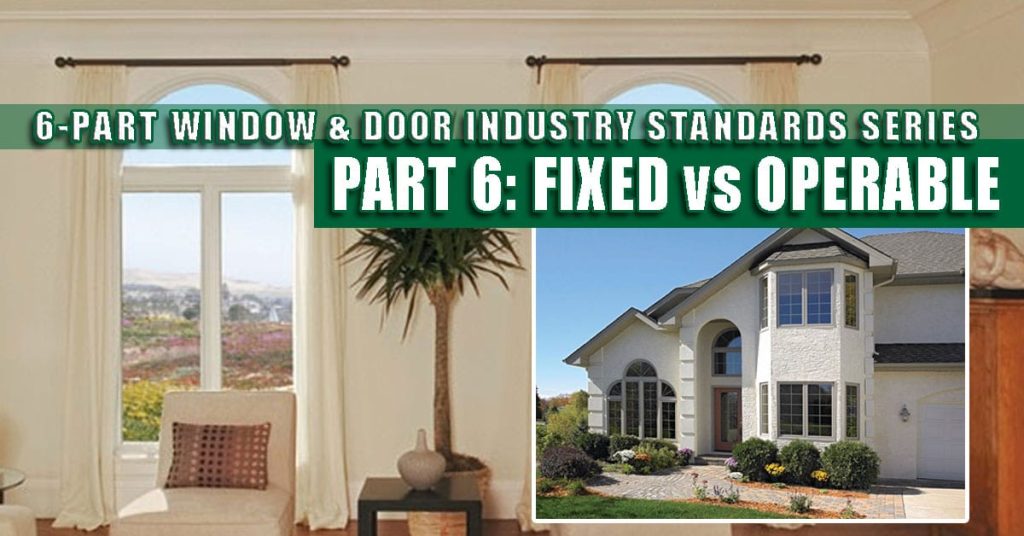

Over the last few weeks, our Renewal by Andersen of New Jersey and New York Metro team has brought you some valuable information to compare different window styles and brands based on industry standards and guidelines for consumers. We wrap up our six-week series on replacement window standards with some information about how to balance the ratio of operable and fixed windows in your home to enhance the overall energy-efficiency, comfort and air quality.
Inoperable windows are usually less expensive than styles that open, but no industry expert would suggest creating an environment without operable windows. Trying to save money by limiting operable windows isn’t wise, or safe, and won’t pay off in the long run.
#1. Building codes, whether national standards covered by the International Residential Code (IRC) or International Energy Conservation Code (IECC) or local statutes, require every dwelling to have sufficient operable windows to allow healthy ventilation and safe egress. Some requirements, like overall glazing size, ensure occupants have a clear view of the outdoors to allow assessing weather and activities that might pose hazards. Inspectors typically don’t go door-to-door in neighborhoods looking for violations, but if you decide to sell your home, you’ll find buyers have trouble securing a mortgage if your home doesn’t meet minimum safety standards. Saving a few dollars today could mean losing (or spending) thousands later.
#2. Windows that open – double-hungs, casements, awnings and sliding replacement windows – allow us to take advantage of the least expensive, most effective natural cooling method known during temperate weather. Opening large windows to flush out stale air improves indoor air quality. Stale air can cause many medical problems, including: lethargy, headaches, dry/scaly skin, respiratory issues and nasal tract irritation – just to name a few. If left uncirculated, indoor bacteria, mold and fungi levels build up and may cause more serious health conditions.
Even when it is cold outside, cracking a window during a party or gathering at your home can make the environment more comfortable. Most of us have been to a crowded event where the body heat and kitchen activities made the room down right stifling. Letting in some fresh air reduces the packed house conditions.
#3. Operable windows make daily life safer. Not only can an open window allow rapid exits during an emergency, modern replacement window styles take the danger out of washing windows. Tilt-to-clean and lift-out window styles make it possible to clean both surfaces from inside your home. No more ladders for windows on the second floor or running back and forth to get rid of the streaks and smudges.
There is no magic formula for deciding how many windows should open and how many should be permanently closed. Keep these tips in mind as you consider what is best for you and your family.
#1. Every room needs at least one door and/or one operable window large enough to provide entrance or egress during an emergency.
#2. Fixed windows are less expensive and more energy-efficient than most operable windows, although casement windows are almost as energy-efficient, and provide easier cleaning and ventilation benefits.
#3. Operable companion windows above, below or beside large picture windows allows you to capture the best of both styles – high energy-efficiency, enhanced safety, convenience and air circulation.
Need more information about balancing operable and fixed replacement windows? We can help. Just fill in the short form on this page or call (866) 609-5033 to speak to a specialist.

Learn Everything You Need to Know BEFORE Buying Replacement Windows